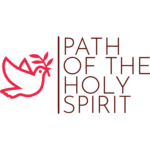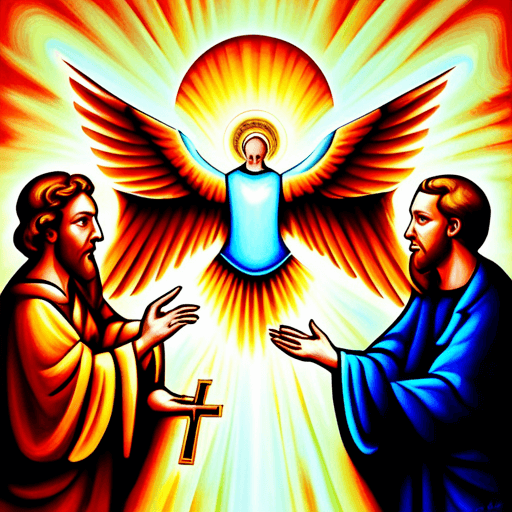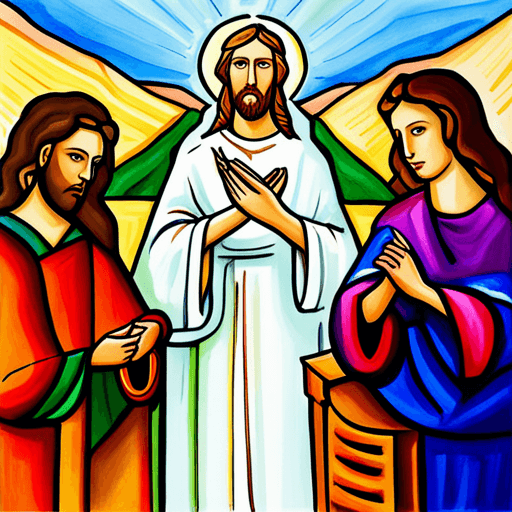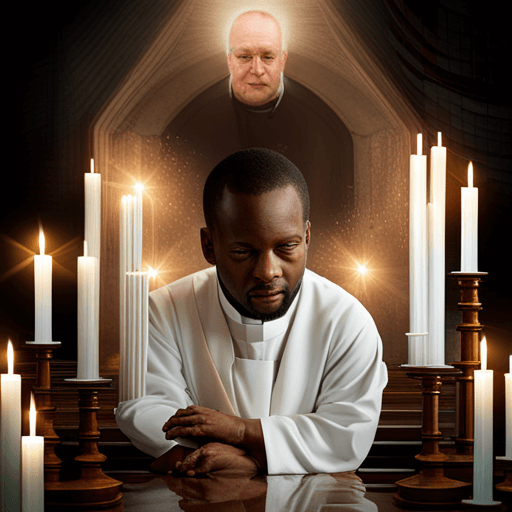You are about to embark on a fascinating journey back in time, to an era where the lines between church and state were blurred and power struggles were commonplace.
In the late 11th century, two titans clashed in what would become known as the Investiture Conflict: Pope Gregory VII and Emperor Henry IV of Germany. This conflict was not just a simple disagreement over who had the right to appoint bishops, but rather a clash of ideologies that would shape Europe for centuries to come.
As you delve into this historical event, you will be transported back to a time when religion played a central role in people’s lives. The Catholic Church had immense power, both spiritual and temporal, and monarchs often found themselves at odds with the papacy over issues of authority.
Pope Gregory VII was one such pope who sought to assert his authority over secular rulers, while Emperor Henry IV saw himself as God’s chosen representative on earth with the power to appoint bishops as he saw fit. Their clash would ultimately lead to excommunication for Henry IV and years of political turmoil across Europe.
Join us as we explore this complex conflict that shaped medieval Europe!
The Historical Context of the Investiture Conflict
You’re about to learn the context behind a clash that shook Europe to its core, pitting two powerful figures against each other in a battle for supremacy.
The Investiture Conflict between Pope Gregory VII and Henry IV was a power struggle between the papacy and the Holy Roman Empire over who had the authority to appoint bishops and other high-ranking church officials.
The conflict had political implications as well as religious significance. At stake was not only control over the church but also control over lands and territories that were under the jurisdiction of both the papacy and the empire.
The Investiture Conflict laid bare deep-seated tensions between secular rulers and spiritual leaders, with each side claiming ultimate authority. It was a turning point in European history that would have far-reaching consequences for centuries to come.
The Role of Church and State in Medieval Europe
Discover how medieval Europe navigated the complex relationship between church and state. The concept of Church State Relations was an intricate part of medieval governance.
During this time period, power was divided between two major institutions: the church and the state. The church held significant influence over society with its teachings, while the state governed through its laws and regulations.
However, this division of power led to many disputes between these two institutions. One of the main issues that arose from Church State Relations was who held authority over appointments within the church, such as bishops and abbots.
This struggle for control came to a head during the Investiture Conflict between Pope Gregory VII and Henry IV, where both parties claimed supremacy over these appointments. It was a pivotal moment in history that highlighted just how important it was for the balance of power to be maintained in order for effective governance to take place.
The Rise of Pope Gregory VII
Get ready to learn about the influential figure who rose to power during a pivotal moment in medieval history. That person is none other than Pope Gregory VII, who played a critical role in shaping the Church’s position and authority in Europe during his reign from 1073 to 1085.
He was a key figure of the Cluniac reform movement that aimed to purify the Church from corruption, simony, and lay investiture. Gregory VII’s reforms were revolutionary for their time. He believed that the Church had ultimate authority over all aspects of life, including politics, and that it should be free from any secular interference.
To achieve this goal, he banned lay investiture which allowed secular rulers to appoint bishops and other high-ranking Church officials. This decision put him at odds with Emperor Henry IV of Germany who saw this as an attack on his power and influence over the Church.
The investiture conflict between Pope Gregory VII and Henry IV would ultimately lead to one of the most controversial moments in medieval European history.
Henry IV’s Challenge to Papal Authority
Now it’s time to see how Emperor Henry IV defied the power of the Pope and put the medieval world in turmoil.
In 1075, Pope Gregory VII issued a decree that prohibited lay investiture – the appointment of bishops and other church officials by secular rulers. This was a direct challenge to Henry IV’s authority as emperor, who had been appointing his own bishops for years.
Henry IV did not take kindly to this interference from the Pope, and he responded by calling a council of German bishops to declare Gregory VII deposed. The Pope retaliated by excommunicating Henry IV, which meant that he was cut off from the sacraments and condemned to eternal damnation unless he repented.
This was a serious blow to Henry’s legitimacy as ruler, as well as his personal reputation. Despite his excommunication, Henry IV still had allies who supported him against the Pope. Many of these were German nobles who resented Gregory VII’s attempts to centralize power in Rome at their expense.
They rallied around Henry and helped him raise an army against the papal forces. The conflict between these two powerful leaders would last for years, with each side claiming victory at different times, but ultimately it would be Gregory VII who emerged victorious from this struggle for supremacy between church and state.
The Aftermath of the Investiture Conflict
After the investiture dispute, the balance between secular and religious power shifted, leading to lasting consequences for both the papacy and European monarchies. The conflict created a ripple effect throughout Europe, as monarchs sought to assert their dominance over the church. This led to an impact on nobility, who were caught in the middle of this power struggle.
The investiture dispute had long term consequences for both Henry IV and Pope Gregory VII. Henry’s challenge to papal authority ultimately weakened his rule and left him vulnerable to rebellion from his own nobles. On the other hand, Pope Gregory VII’s uncompromising stance against secular influence established him as a powerful figure within the church and set a precedent for future popes to follow.
The aftermath of this conflict highlighted the tensions between temporal and spiritual authority that would continue to shape Europe for centuries to come.
Frequently Asked Questions
What was the weather like during the Investiture Conflict?
Imagine yourself in the midst of a medieval battlefield, fighting through the rain and mud. The weather was often unpredictable during these rainy battles, which had a significant impact on agriculture as well. The wet conditions made it difficult to grow crops and caused food shortages for both soldiers and civilians alike.
These hardships only added to the already intense conflict between two powerful leaders vying for control. While the weather may seem like an insignificant factor in such a historical event, it played a crucial role in shaping the outcome and highlighting the fragility of human existence in the face of natural forces beyond our control.
Did either Pope Gregory VII or Henry IV have any pets?
Imagine walking through the grand halls of medieval Rome, where two powerful men once roamed with their beloved pets.
Pope Gregory VII and Emperor Henry IV both had pets that reflected their personalities: the pope had a loyal dog named Zoninus, while the emperor kept a fierce falcon named Gerfalcon.
These pets may seem like insignificant details, but they actually played a significant role in the Investiture Conflict.
Zoninus was known to be by his owner’s side during times of stress, providing comfort and companionship when Gregory VII faced opposition from Henry IV.
Meanwhile, Gerfalcon symbolized Henry IV’s desire for dominance and control over his subjects.
The presence of these pets speaks to the personal lives of these historical figures and how even in moments of great conflict, their furry (or feathered) friends provided them with emotional support and displayed their unique personalities.
What was the favorite food of either Pope Gregory VII or Henry IV?
Imagine yourself sitting down for a meal with Pope Gregory VII and Henry IV. As you take a bite of your food, you can’t help but wonder what their favorite dishes might be. Food preferences reveal so much about cultural identity and personal taste, after all.
Perhaps Gregory VII enjoyed the simplicity of Italian cuisine, with its emphasis on fresh ingredients and bold flavors. Maybe Henry IV preferred the hearty fare of his native Germany, with its rich stews and savory sausages. But in the context of the investiture conflict between these two historical figures, food took on an even greater significance.
Banquets and feasts were used as political tools to gain support from allies or intimidate opponents. In this way, food became a symbol of power during one of history’s most contentious conflicts.
Did any famous artists or writers of the time document the Investiture Conflict?
Imagine yourself transported back in time to the tumultuous period of the Investiture Conflict. As you wander through the bustling streets of medieval Europe, you can’t help but wonder: did any famous artists or writers of the time document this historic event?
The answer is a resounding yes. Many artistic depictions and literary works have survived from this era, providing us with a glimpse into the political and religious upheaval that swept across Europe during this period.
From illuminated manuscripts to epic poems, these works offer a fascinating insight into the minds and hearts of those who lived through this turbulent time. Whether you’re an art lover or a history buff, there’s something truly captivating about exploring these artistic and literary treasures from centuries past.
Were there any notable natural disasters that occurred during the Investiture Conflict?
Imagine a time when the forces of nature were as unpredictable as the political climate. During this period, natural disaster impact had significant political implications. The Investiture Conflict was no exception to this rule.
While there is no record of any specific natural disasters occurring during this conflict, it’s easy to imagine how they could have affected the outcome. A severe drought or flood could have disrupted supply lines and weakened armies. An earthquake or volcanic eruption could have been interpreted as a sign from God favoring one side over the other.
In a world where superstition and religion played such a significant role in politics, it’s impossible to ignore the potential impact of natural disasters on historical events like the Investiture Conflict.
Conclusion
You can’t help but feel the weight of history as you reflect on the Investiture Conflict between Pope Gregory VII and Henry IV. It was a pivotal moment in the relationship between Church and State, setting a precedent for centuries to come.
The conflict revealed the power struggle between two institutions that sought to control each other, with Gregory VII asserting the supremacy of papal authority over secular rulers.
The Investiture Conflict also had far-reaching consequences beyond its immediate aftermath. It marked a turning point in European history, paving the way for greater separation of Church and State and reinforcing the importance of individual rights and freedoms.
Though it was a tumultuous time filled with political intrigue and religious fervor, it ultimately led to progress that would shape Western society for centuries to come.




